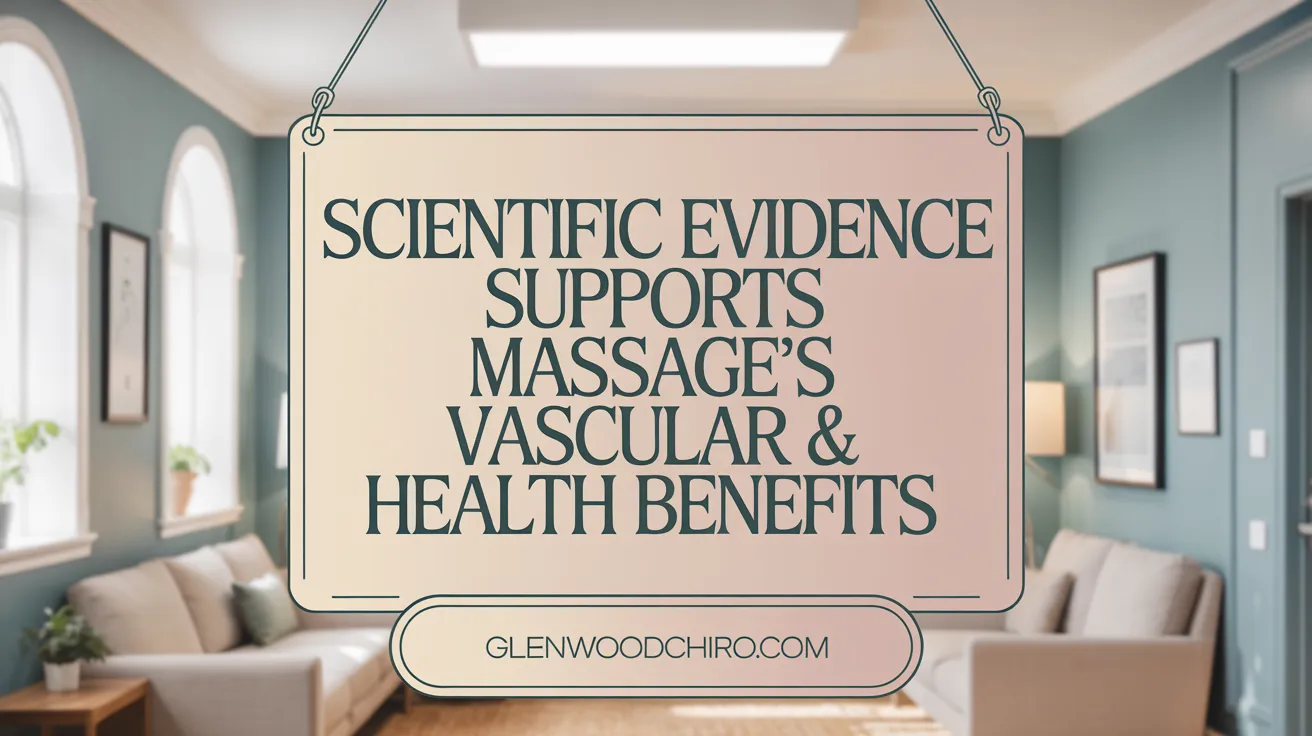The Growing Importance of Massage Therapy in Musculoskeletal Health
Overview of Massage Therapy as a Supportive Health Treatment
Massage therapy is increasingly recognized as an effective complement to standard medical treatments. It is widely used to support recovery from various musculoskeletal conditions, including sports injuries, post-surgical care, and chronic pain management. This non-invasive approach is safe for all ages and helps improve overall wellbeing by addressing muscle stiffness, pain relief, and stress reduction.
Role in Non-Invasive Musculoskeletal Care and Recovery
By promoting muscle relaxation and reducing tension, massage therapy aids in restoring mobility and flexibility. It supports faster tissue healing by enhancing oxygen and nutrient delivery to damaged tissues. Additionally, massage helps in lowering inflammation and muscle soreness, speeding up recovery after physical activity or injury. Techniques such as effleurage, petrissage, and friction work synergistically to alleviate pain and restore function.
Connection to Improved Circulation and Stability
A critical benefit of massage therapy is its ability to stimulate vasodilation, which widens blood vessels and improves blood flow. This enhanced circulation delivers essential nutrients and oxygen to muscles and tissues and facilitates the removal of metabolic waste. Improved vascular function also supports lymphatic drainage, boosting immune response. Furthermore, massage therapy contributes to better postural stability and balance, particularly in older adults, reducing the risk of falls by improving nervous system regulation and joint flexibility.
How Massage Therapy Boosts Circulation for Healing and Wellness
How does massage therapy improve blood circulation and support recovery?
Massage therapy enhances blood circulation primarily through the stimulation of vasodilation and massage benefits, a process where blood vessels widen and relax. This widening increases blood flow, ensuring muscles and tissues receive more oxygen and essential nutrients, which are critical for cellular metabolism and repair.
What role does manual manipulation play in circulation?
Through rhythmic manual manipulation—such as effleurage massage benefits and petrissage for blood flow—massage produces a pump-like effect on blood vessels. This action promotes smooth blood flow and assists the lymphatic system in removing toxins and waste, thereby supporting immune function and detoxification through Manual Lymphatic Drainage massage.
How does muscle relaxation contribute to better circulation?
Tense muscles can constrict blood vessels, limiting blood flow. Massage therapy relaxes these muscles, relieving tension and reducing spasms, which diminishes blood flow restriction and enhances nutrient delivery to the tissues through muscle relaxation and improved blood flow.
How does stress reduction affect circulatory health?
Massage lowers cortisol levels, a stress hormone that can cause vasoconstriction. By reducing cortisol, massage induces further vasodilation, leading to lowered blood pressure and improved blood circulation throughout the body, as explained in massage reduces cortisol levels and massage lowers blood pressure.
What clinical benefits arise from improved circulation through massage therapy?
Enhanced circulation supports faster massage promotes tissue healing, decreases massage reduces inflammation, and expedites injury recovery with massage. Regular massage also helps prevent blood clots by maintaining smooth blood flow, contributing to cardiovascular health and overall wellness, as detailed in massage therapy improves circulation and massage therapy and blood circulation.
By integrating these mechanisms, massage therapy serves as a holistic, patient-centered treatment that advances recovery, promotes health, and sustains mobility through CareMax Wellness And Rehab massage services and personalized massage therapies in Oshawa.
Massage Therapy’s Influence on Postural Stability and Balance

How does massage therapy improve stability and reduce fall risk?
Massage therapy improves postural stability primarily by enhancing sensory stimulation in the feet, which play a critical role in balance control. The feet contain sensory receptors that communicate with the brain to maintain equilibrium. Targeted massage techniques reconnect the brain to these receptors, boosting sensory input and thus stability. This relationship between massage therapy and balance in older adults highlights the role of foot sensation in balance.
In combination with resistance exercises, massage therapy increases joint flexibility and enhances nervous system transmission related to posture regulation. This dual approach helps improve muscle coordination and joint mobility, which are essential for maintaining balance. The massage and resistance exercise for joint flexibility concept supports this synergy.
What are the benefits of massage therapy for older adults at risk of falls?
Falls present a major health concern for older adults, with over 25% experiencing falls annually in some communities. Massage therapy offers a non-invasive, evidence-based intervention to reduce this risk. Studies funded by reputable organizations, including the 2012 Massage Therapy Foundation study, have demonstrated that regular massage can improve balance, thus potentially lowering fall incidence. This aligns well with holistic health promotion in aging populations.
How is massage therapy applied in musculoskeletal clinics for balance enhancement?
Musculoskeletal clinics often incorporate massage therapy alongside resistance exercises to restore mobility and enhance postural control. Therapists focus on treating muscle tension and improving sensory feedback from the feet and joints. This multidisciplinary strategy supports functional recovery and reduces fall-related injuries. Moreover, practitioners emphasize self-care including posture awareness and ergonomic practices to sustain their own musculoskeletal health, reflecting self-care for massage therapists in Glenwood Springs and approaches to preventing musculoskeletal issues in massage therapists.
Overall, massage therapy serves as a valuable, patient-centered component in fall prevention and balance enhancement, especially for seniors and individuals recovering from injury.
Integrating Massage Therapy into Recovery and Pain Management

How does massage therapy assist in recovery and pain relief?
Massage therapy functions as a valuable adjunct to conventional medical treatments, especially in managing sports injuries and postoperative recovery. By targeting muscle stiffness and joint inflammation, massage encourages flexibility and reduces pain and soreness, facilitating a more effective restoration of mobility. This physical relief is complemented by its mental health benefits, which include decreased anxiety and stress levels, improved relaxation, and mood enhancement—factors that collectively promote overall recovery (Benefits of massage therapy).
The techniques used in massage improve circulation, delivering oxygen and nutrients to injured tissues while supporting lymphatic drainage to remove toxins, both of which accelerate healing (massage therapy and blood circulation, Massage for improved blood circulation in San Francisco CA, vasodilation and massage benefits). Additionally, massage fosters faster recovery after surgery and injuries by reducing inflammation and muscle tension, essential for regaining functional movement (massage reduces inflammation, massage therapy eases muscle soreness).
Massage therapy's broad safety profile makes it suitable for all ages, ensuring its applicability across diverse rehabilitation settings (massage therapy for all ages. Incorporating licensed therapists ensures the delivery of effective, personalized care that optimizes recovery outcomes while maintaining patient safety (CareMax Wellness And Rehab massage services).
Overall, massage therapy offers a holistic, patient-centered approach that integrates physical healing with mental well-being, improving both the speed and quality of recovery from injury and surgery (Benefits of massage therapy.
Scientific Insights: Massage Therapy’s Lasting Vascular Benefits

What scientific evidence supports massage therapy’s effects on vascular health?
Scientific research has substantiated the vascular benefits of massage therapy through rigorous studies. A notable investigation published in the Archives of Physical Medicine and Rehabilitation revealed significant improvements in blood flow following massage therapy. This study documented an increase in flow-mediated dilation (FMD) of arteries, a key indicator of enhanced vascular function, in participants regardless of their physical activity levels. These improvements persisted for several days, indicating a sustained protective effect on the vascular system.
Additionally, massage therapy was shown to alleviate muscle soreness after exercise more effectively than rest alone. Participants receiving massage reported no continuing soreness 90 minutes post-therapy, whereas those who only exercised experienced soreness lasting up to 24 hours. This reduction in discomfort demonstrates massage’s role in accelerating the recovery process through massage therapy and blood circulation.
How does massage therapy contribute to cardiovascular health and tissue repair?
By stimulating vasodilation and massage benefits massage widens and relaxes blood vessels, thereby enhancing blood flow to muscles, organs, and tissues. This increased circulation supports vital processes such as oxygen and nutrient delivery, cellular metabolism, and efficient tissue repair. Improved blood flow also reduces the workload on the heart and lowers blood pressure, contributing to better cardiovascular health.
Massage supports Manual Lymphatic Drainage massage, facilitating the removal of toxins and waste products from the body. This detoxification process, combined with improved systemic circulation, not only aids immune function but also helps prevent blood stagnation and the formation of clots, notably benefiting individuals at risk for cardiovascular complications.
What are the extended benefits of sustained improved circulation from massage therapy?
Sustained enhancement of vascular function through massage promotes faster massage promotes tissue healing, essential for managing sports injuries and chronic pain. Techniques such as effleurage massage benefits and petrissage for blood flow help rhythmically stimulate blood vessels, generating a massage pump effect that promotes continual blood movement. This ongoing circulation boost assists in maintaining healthy tissue function and supports overall well-being.
In conclusion, Benefits of massage therapy offers holistic, patient-centered vascular benefits. By improving blood flow, facilitating detoxification, and supporting tissue repair, massage serves as an effective complementary approach to cardiovascular health and recovery.
Lifestyle and Therapeutic Synergy: Maximizing Circulation and Stability

What lifestyle and therapeutic factors complement massage therapy’s benefits?
Lifestyle habits play a crucial role in enhancing and sustaining the circulatory improvements gained from massage therapy and blood circulation. Regular exercise, adequate hydration, and balanced nutrition work synergistically to promote healthy blood flow and tissue vitality. Managing stress effectively and avoiding detrimental habits like smoking and excessive alcohol intake further optimize vascular health as described in lifestyle tips for circulatory health.
Therapeutically, massage uses a variety of techniques tailored to stimulate circulation and support tissue repair. Effleurage massage benefits, characterized by long gliding strokes, and petrissage for blood flow, involving kneading and lifting, encourage blood vessel dilation and rhythmic compression. Tapotement applies rhythmic tapping, friction targets deeper tissues, and compression presses tissues to boost lymphatic flow and vascular health, all techniques detailed under massage techniques for circulation.
How do massage therapists maintain their effectiveness and ensure client safety?
To provide consistent, effective treatments, massage therapists must prioritize their musculoskeletal health through self-care practices such as regular stretching, instrument-assisted soft tissue mobilization (IASTM), and strengthening exercises. Maintaining their own physical wellness prevents work-related injuries, as emphasized in self-care for massage therapists in Glenwood Springs.
Clients benefit most when therapists are licensed and possess experience, guaranteeing knowledge of anatomy, contraindications, and appropriate techniques. This ensures safe, tailored interventions that enhance circulation and mobility without adverse effects, aligning with choosing a licensed massage therapist.
Why is massage therapy particularly relevant in wellness-focused communities?
Communities valuing health and active lifestyles—like Glenwood Springs, Colorado—find massage therapy integral to their wellness regimen. By improving circulation, reducing muscle stiffness, and enhancing postural stability, massage supports recovery from outdoor activities and reduces fall risks among older adults, as outlined in massage therapy and balance in older adults. Its role as a non-invasive complement to conventional care aligns with patient-centered approaches seeking holistic musculoskeletal health, per Benefits of massage therapy.
Integrating massage therapy with healthy lifestyle choices and employing skilled therapists creates a comprehensive strategy for maintaining optimal circulatory function and physical stability. For example, CareMax Wellness And Rehab massage services provides personalized massage therapies in Oshawa, supporting such integrative health approaches.
Empowering Recovery Through Skilled Massage and Holistic Care
Enhancing Circulation and Stability with Massage
Massage therapy plays a vital role in improving blood flow and postural stability. By stimulating vasodilation, massage widens blood vessels, enhancing oxygen and nutrient delivery to tissues. This supports quicker tissue healing, reduces inflammation, and aids in injury recovery. Additionally, massage relaxes tight muscles that can restrict circulation, restoring flexibility and reducing muscle stiffness. Targeted foot and resistance exercises paired with massage also improve nervous system transmission, contributing to better balance and fall prevention, especially in older adults.
Integrative Approach for Musculoskeletal Health
Massage therapy is increasingly recognized as an essential component of integrative musculoskeletal care. It complements conventional treatments by promoting recovery from sports injuries, postoperative conditions, and joint inflammation. The technique’s ability to stimulate lymphatic drainage helps remove toxins and supports immune function, enhancing overall wellness. By reducing stress hormones, massage additionally lowers blood pressure and relaxes blood vessels, further supporting cardiovascular and musculoskeletal health.
Incorporating Massage into Wellness Routines
Regular massage should be considered a cornerstone of holistic health management. Along with lifestyle choices like exercise, nutrition, and stress management, massage therapy optimizes circulatory health and musculoskeletal function. Seeking care from licensed and skilled therapists ensures personalized treatment aimed at lasting improvements in mobility, pain relief, and balance. Embracing massage as part of a comprehensive wellness routine empowers individuals to maintain resilience and accelerate recovery effectively.
